The Merida One-Forty 500 is the most affordable model in the brand’s esteemed trail bikes line-up.
Contrary to its name, the 29er One-Forty has 143mm of rear suspension travel paired with a 150mm fork up front.
As a winner of the 2023 Bike of the Year Award, albeit in a more expensive guise, the One-Forty is already a tried-and-tested trail bike.
However, even great frames can struggle to unleash their potential when specced with underwhelming components, so I was glad to discover the Merida hasn’t lost any of its acclaimed performance on the trail.
Uphill, it impressed with its eager climbing manners, and on the descents it rewarded me with supportive suspension and fun, agile handling.
Merida One-Forty 500 frame and suspension
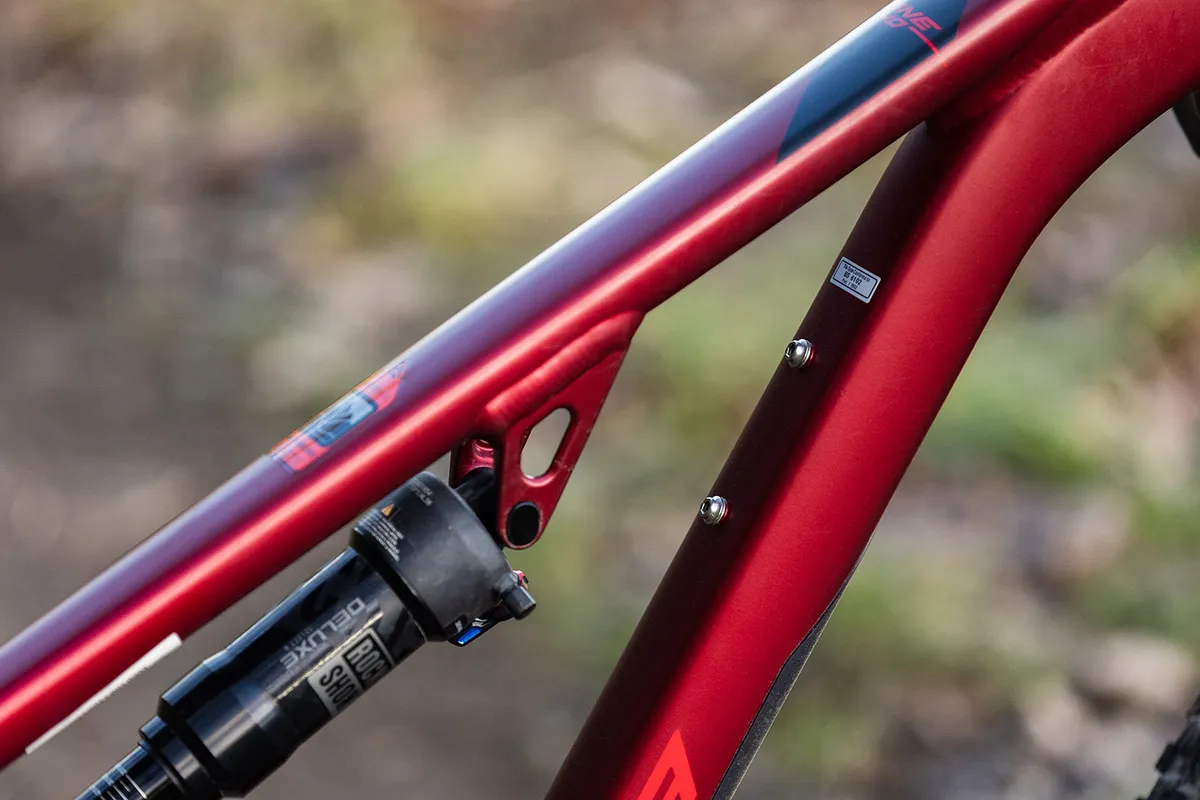
The One-Forty’s frame is made from Merida’s hydroformed ProLite double-butted aluminium.
This bike shares the same frame as its enduro stablemate, the longer-travel One-Sixty, but features a shorter stroke shock to bring the travel down to 143mm.
Cables are routed through the upper headset bearing, before running through the frame in internal sleeves.
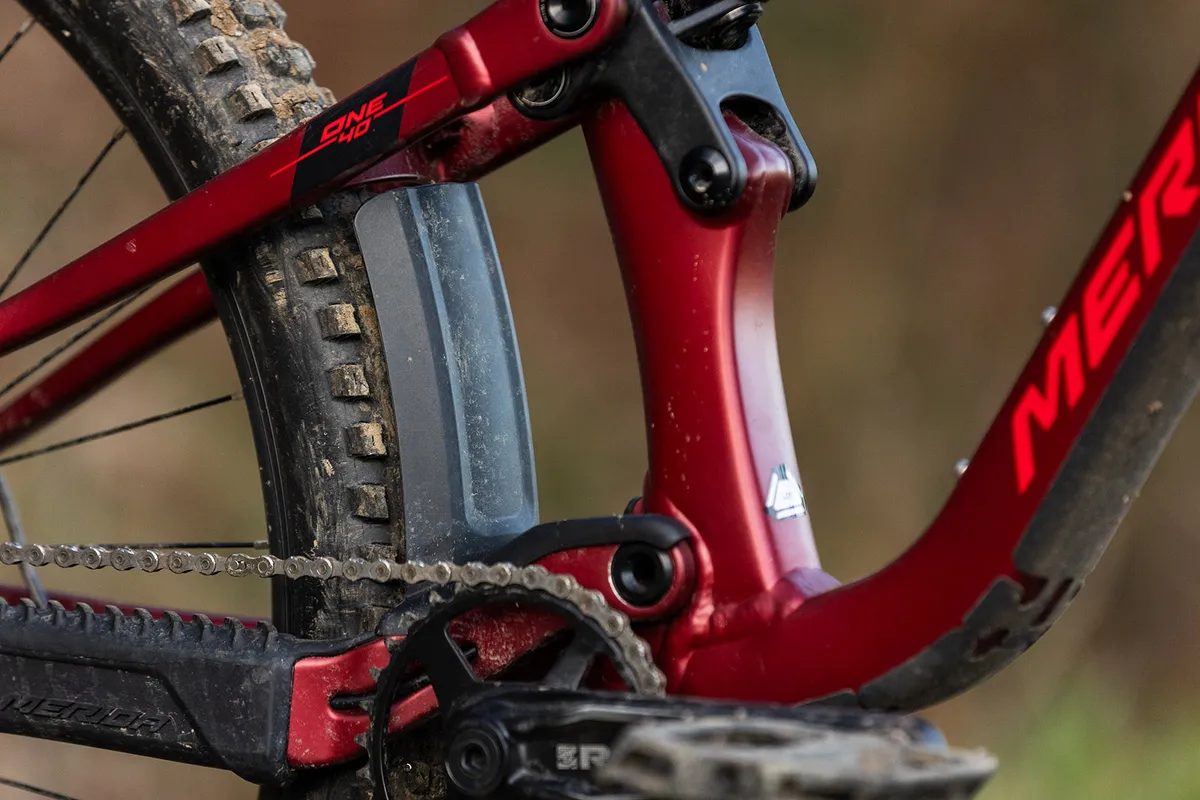
Frame protection is provided by a moulded rubber chainstay protector, which stretches all the way up to the lower pivot, and a large down-tube protector.
A neat mudguard protects the lower pivot from spray and debris from the trail.
There’s plenty of space for a water bottle in the front triangle and a second set of rivets further up the down tube allows for extra storage of tools or spares.
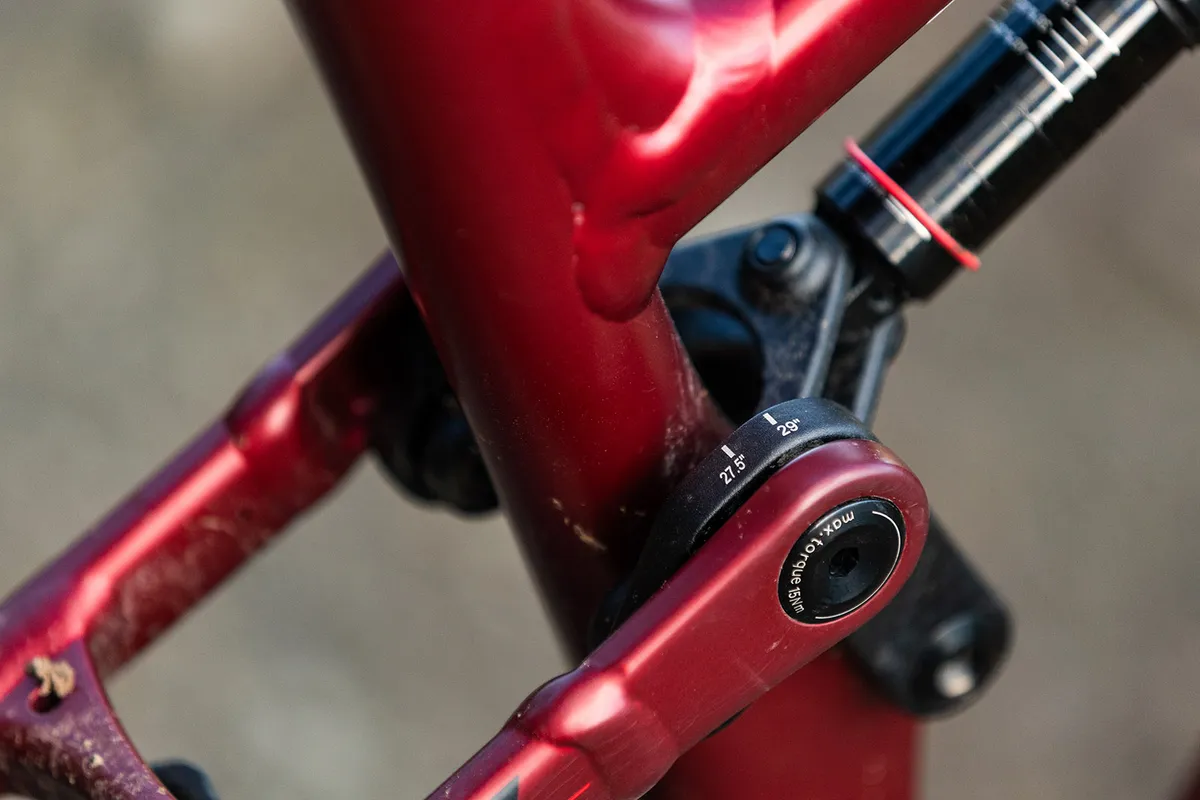
The One-Forty uses Merida’s FAST suspension platform, which uses a flex-stay system instead of a seatstay pivot, which is claimed to reduce weight and maintenance while upping the rear triangle’s lateral stiffness.
The platform’s kinematics change with each frame size, meaning taller/heavier riders get more progressive suspension than smaller/lighter ones.
Finally, a flip chip in the upper link enables the One-Forty to be run as a mullet setup with a smaller, 27.5in rear wheel if desired. This ups the travel to 151mm, while maintaining the bike’s geometry.
Merida One-Forty 500 geometry
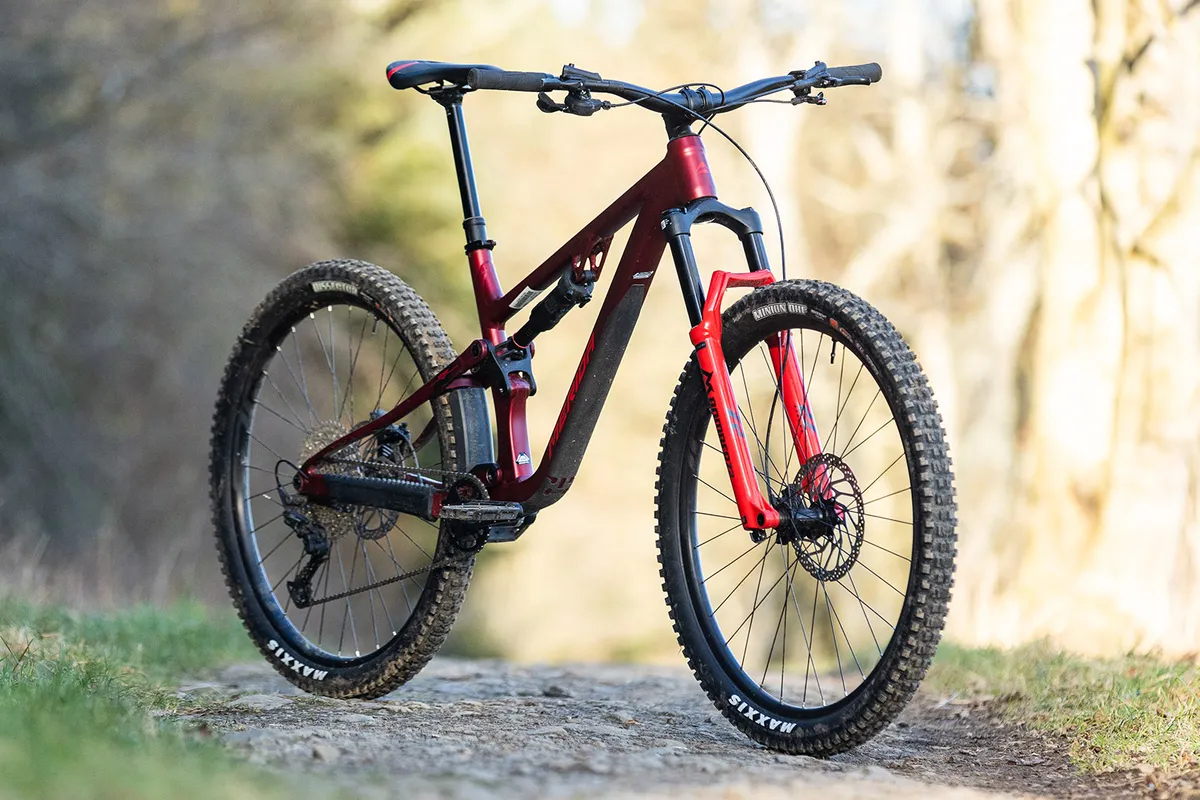
The One-Forty boasts some pretty extreme geometry figures.
It uses Merida’s Agilometer sizing system, which enables you to run a longer or shorter-reach frame independently of your height. Rather than using small, medium or large to convey its sizing, Merida uses short, mid, long, etc.
I tested the One-Forty in size long, which is based on a 509mm reach and a 445mm seat tube. The head angle is a relatively slack 65 degrees, while the effective seat tube angle is a radically steep 80 degrees.
The chainstays measure 437mm across all five sizes, taking the wheelbase of my test bike to a relatively stretched 1,265mm.
| | XShort | Short | Mid | Long | XLong |
|---|---|---|---|---|---|
| Seat tube angle (degrees) | 80 | 80 | 80 | 80 | 80 |
| Head tube angle (degrees) | 65 | 65 | 65 | 65 | 65 |
| Chainstay (mm) | 437.5 | 437.5 | 437.5 | 437.5 | 437.5 |
| Seat tube (mm) | 400 | 410 | 425 | 445 | 470 |
| Top tube (mm) | 532 | 559 | 586 | 618 | 649 |
| Head tube (mm) | 95 | 95 | 95 | 105 | 120 |
| Bottom bracket drop (mm) | 35 | 35 | 35 | 35 | 35 |
| Wheelbase (mm) | 1177 | 1204 | 1232 | 1265 | 1298 |
| Standover (mm) | 730 | 735 | 738 | 735 | 730 |
| Stack (mm) | 607 | 607 | 607 | 616 | 629 |
| Reach (mm) | 426 | 453 | 480 | 509 | 535 |
Merida One-Forty 500 specifications

Its spec is well thought-out, prioritising performance and durability, while keeping costs at a reasonable level.
Rear suspension damping is taken care of by a RockShox Deluxe Select+ shock, which is a smooth performer and easy to set up.
Up front, Merida has specced a Marzocchi Bomber Z2, which uses a RAIL damper.
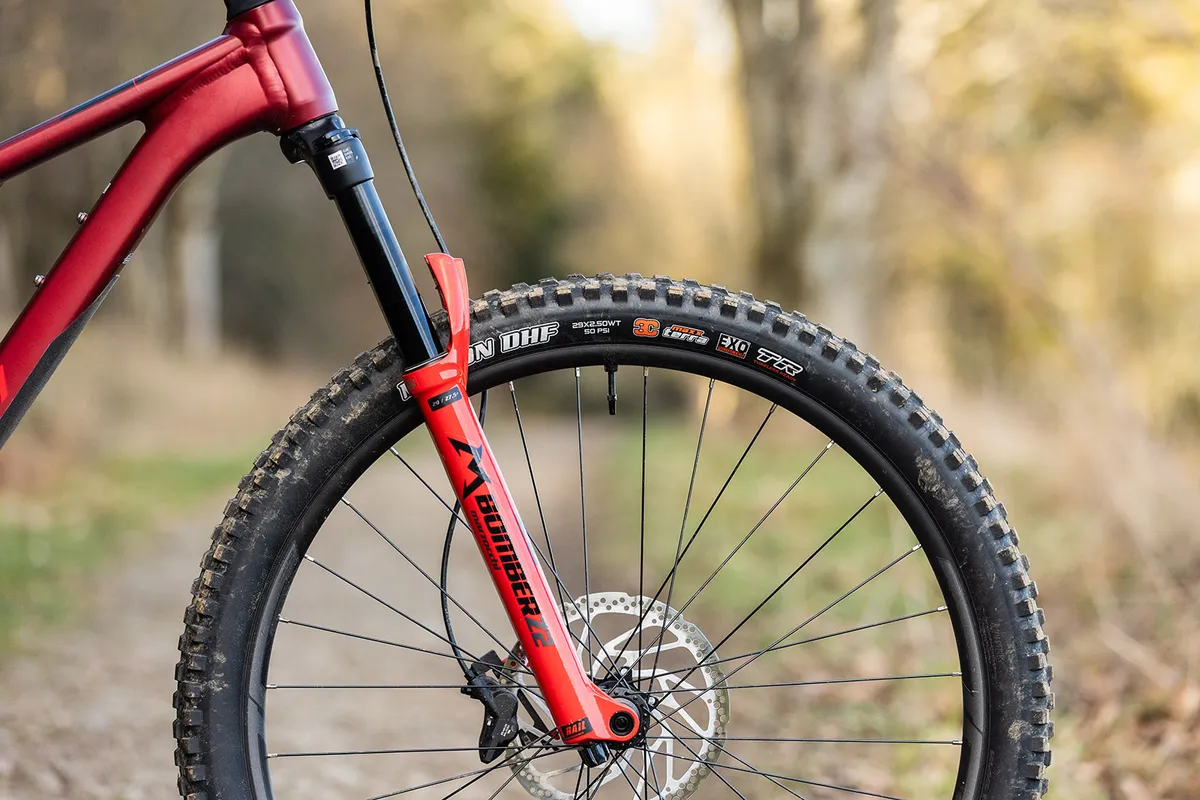
Stopping power is delivered by Shimano, with Deore four-piston brakes and large, 203mm rotors front and rear.
The drivetrain is also Shimano Deore, in its 11-speed guise, with a wide-range 11-51t cassette.
Merida’s in-house aluminium wheels are treated to Maxxis tyres, with a grippy Minion DHF front tyre and a faster-rolling Dissector at the rear. Both use Maxxis’ MaxxTerra rubber compound and EXO casing.
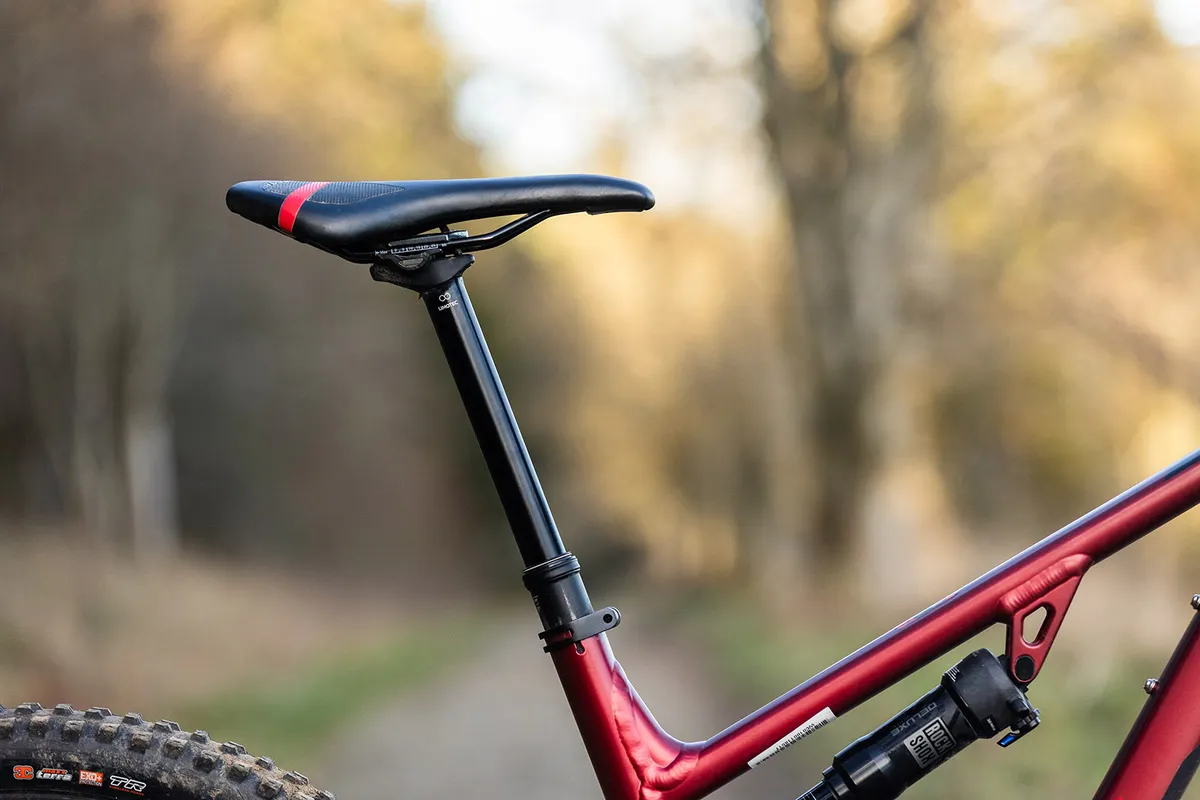
The huge 200mm dropper is also Merida’s own design and offers user-adjustable travel from 30-230mm.
All in all, the size ‘long’ test bike weighs 15.85kg without pedals.
Merida One-Forty 500 ride impressions
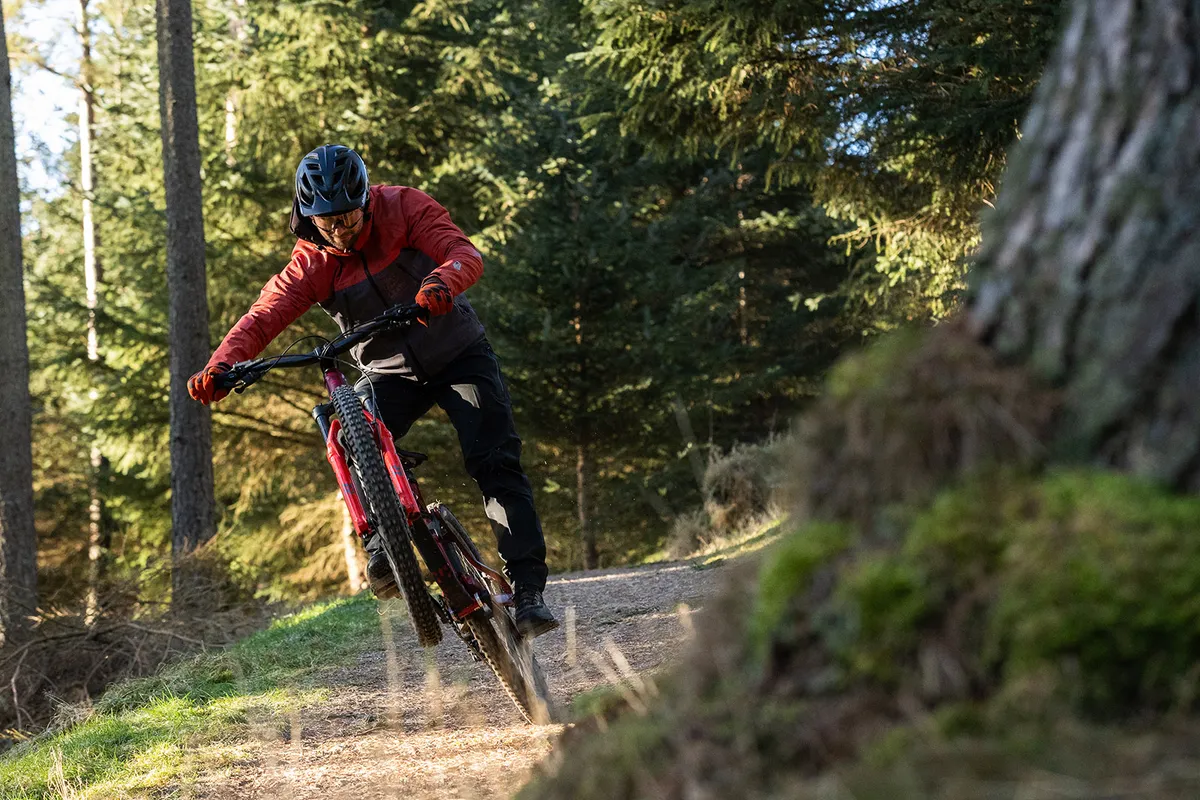
The One-Forty 500's suspension was relatively easy to set up. However, I had to play around with bar height and roll during the test period to improve comfort.
Once set, however, I left the bike for the duration of testing, with no further adjustments required.
Merida One-Forty 500 climbing performance
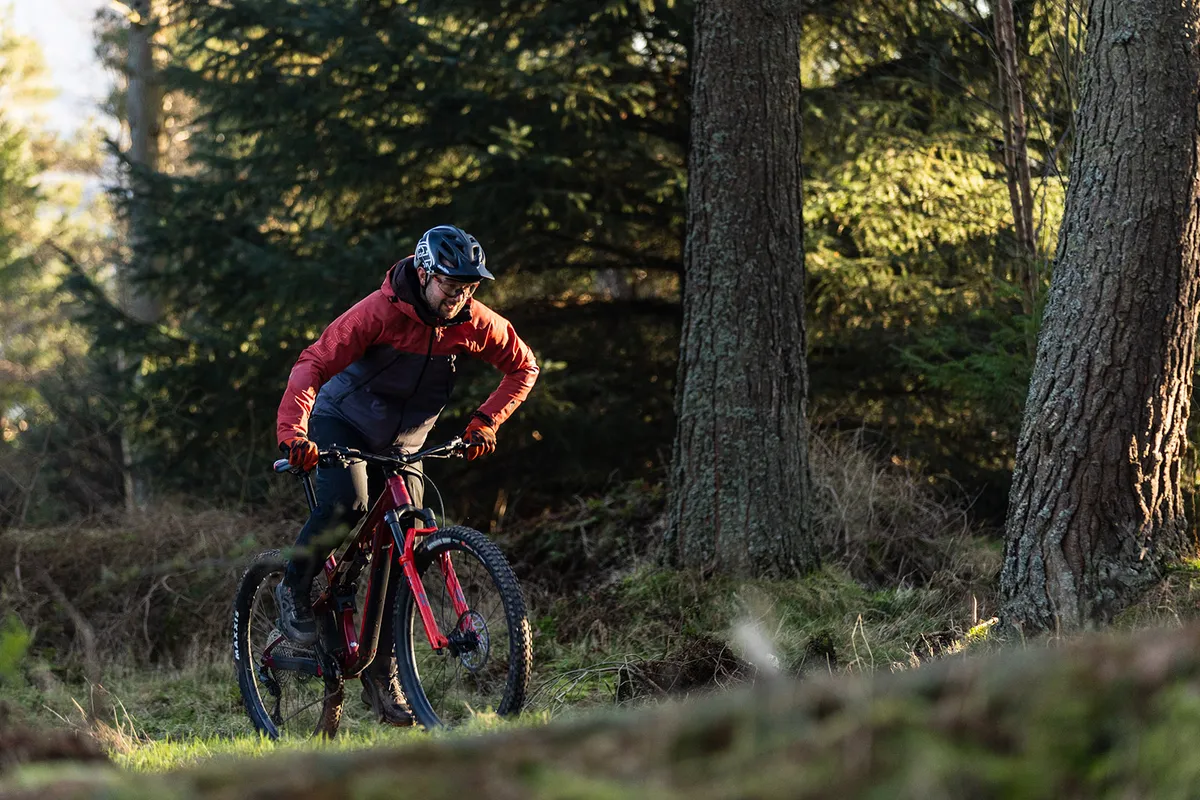
Pedalling uphill on the Merida One-Forty is a treat.
The super-steep, 80-degree seat tube angle and roomy 586mm top tube put you in a very comfortable and upright pedalling position.
With your weight right over the bottom bracket, you’re sat in the perfect spot to efficiently spin the cranks on seated climbs.
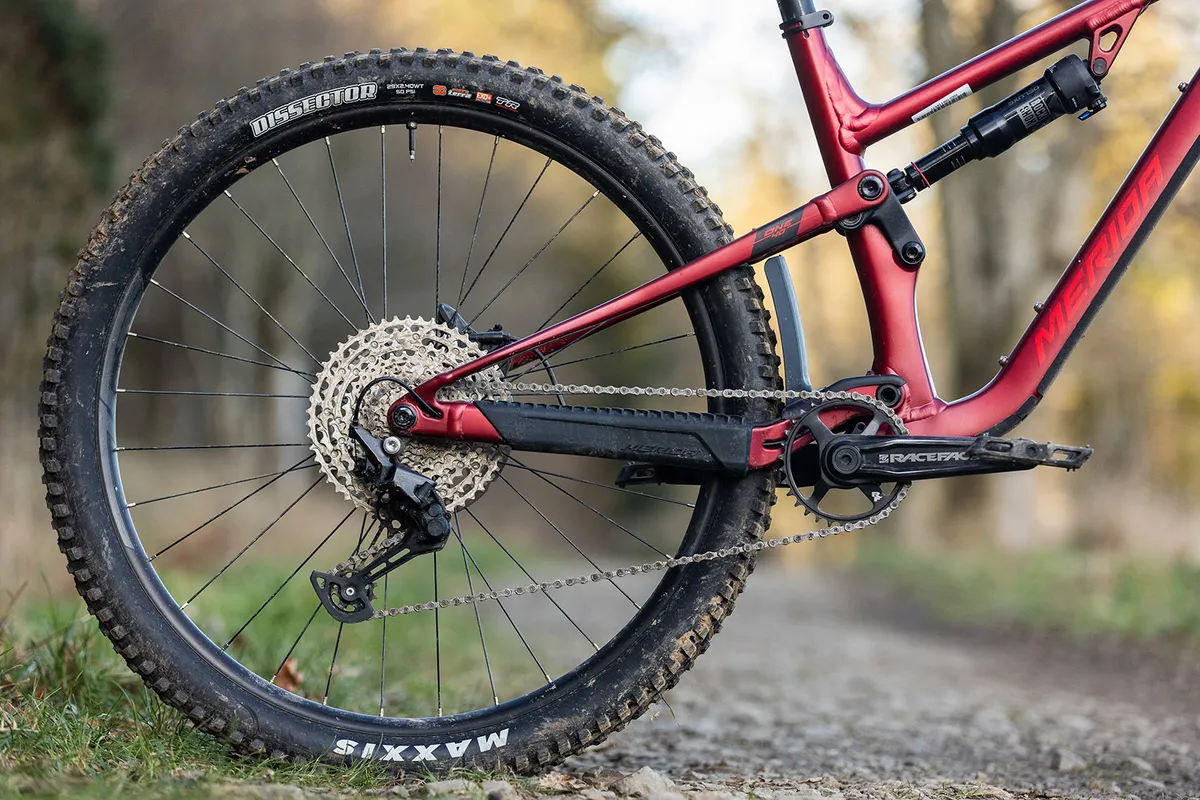
The relatively low front end (607mm stack), paired with that steep seat tube, ensured my front wheel never once lifted or wandered, even on the steepest of switchback climbs.
This pedalling position, though efficient, puts a bit more load on your hands than most other trail bikes I’ve ridden. However, this can be tuned by adjusting the bar height and roll.
The FAST suspension design matches the performance of the modern geometry, providing a solid pedalling platform that resists pedal-bob excellently, ensuring every watt of energy is delivered to the trail rather than being soaked up by the suspension.
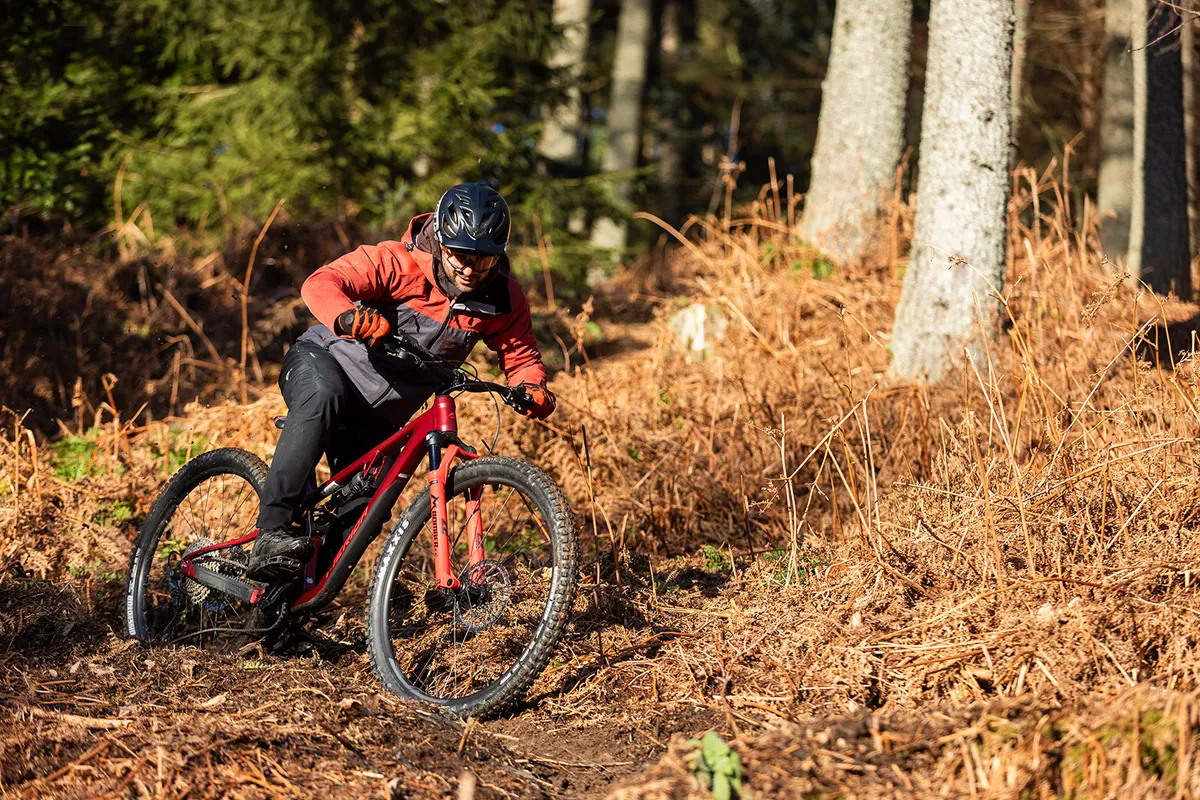
This improves acceleration on undulating terrain and helps you hold speed.
On technical climbs, the supportive suspension does well to absorb larger bumps from bigger roots or rocks, but the trade-off is it doesn’t always track the ground perfectly, leaving it up to the tyres to generate the majority of the grip in certain situations.
The relatively fast-rolling Maxxis Dissector rear tyre, in the brand’s semi-tacky MaxxTerra compound, minimises drag and emphasises the One-Forty’s climbing prowess.
Merida One-Forty 500 descending performance
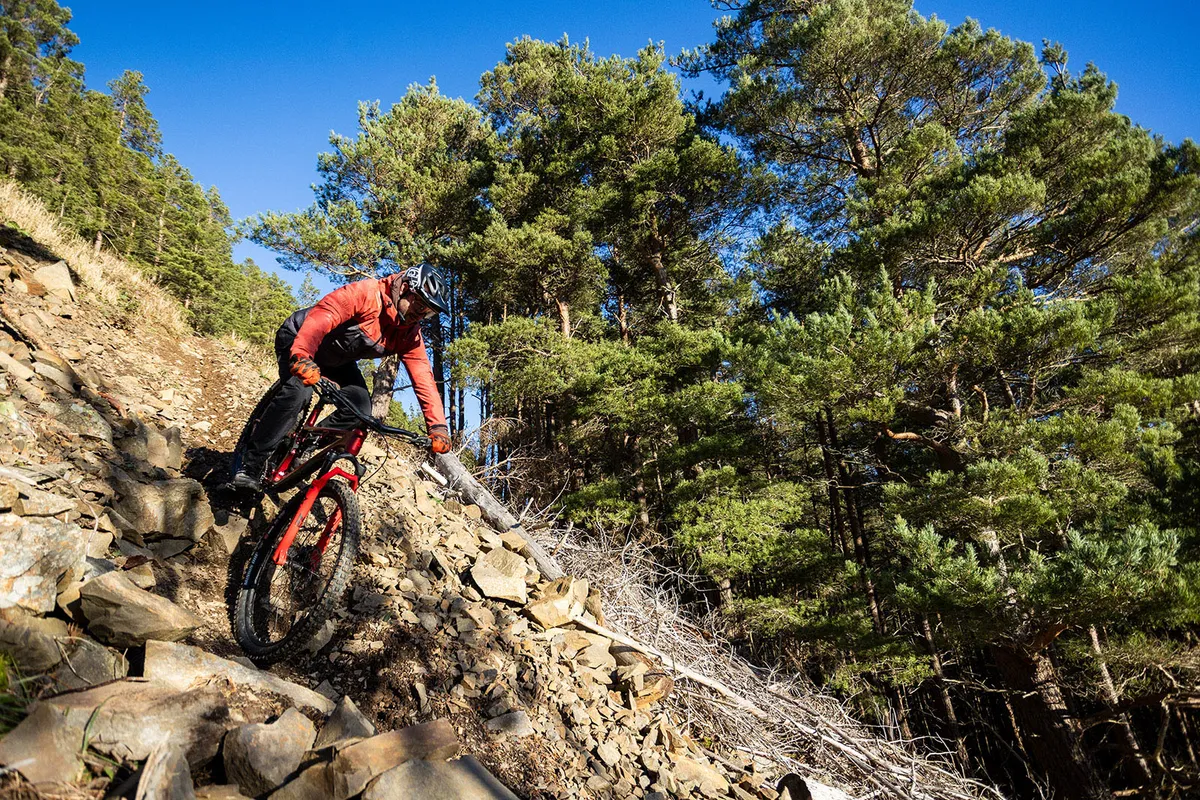
Pointed downhill, the Merida displays a playful character.
The long, 509mm reach and 65-degree head angle make it stable at speed, while the relatively short 445mm seat tube and huge 200mm dropper mean it’s easy to get low on the bike when needed.
As on the climbs, the low front end improves grip. However, I noticed my hands getting tired from the weight bias on longer descents.
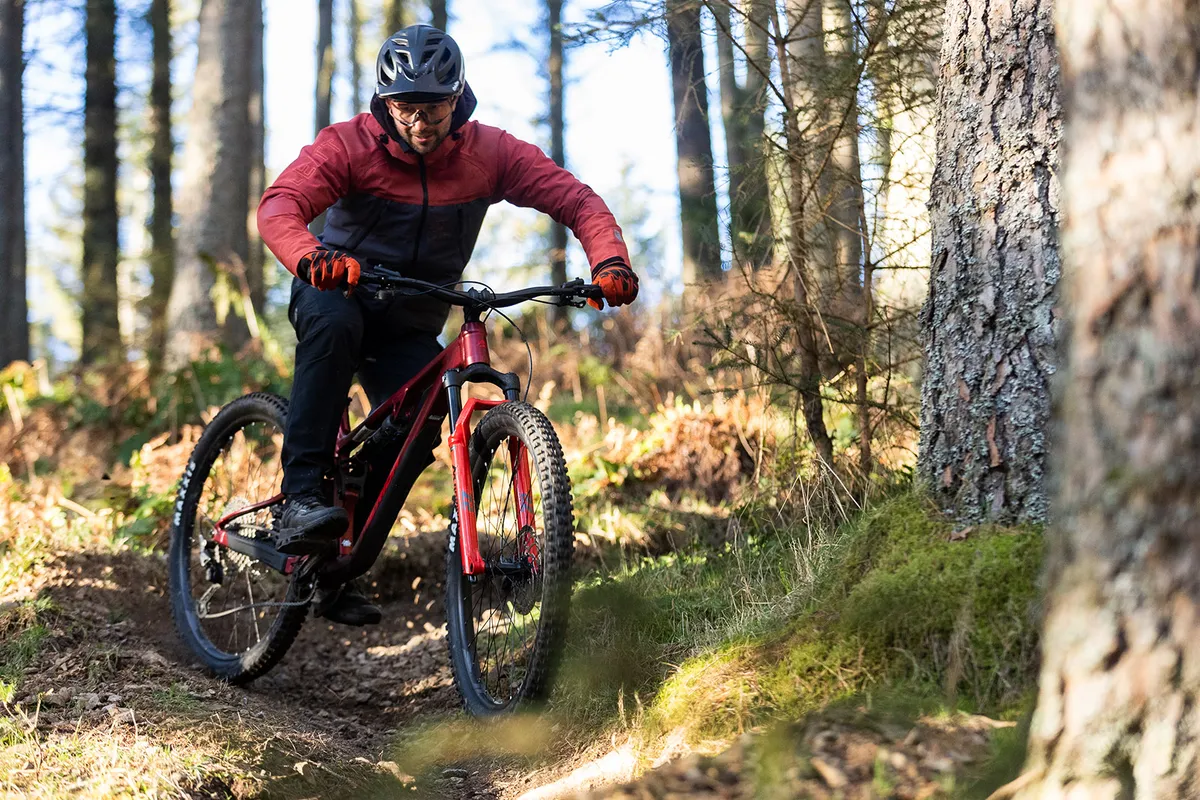
To remedy this, I rolled the alloy bars back by a few degrees, shifting my weight a little further back on the bike.
The same effect could also be reached by raising the stem, but my test bike came with it already maxed out at the top of the steerer tube.
Rolling the bars back improved things and I felt my weight distribution on the bike was more balanced.
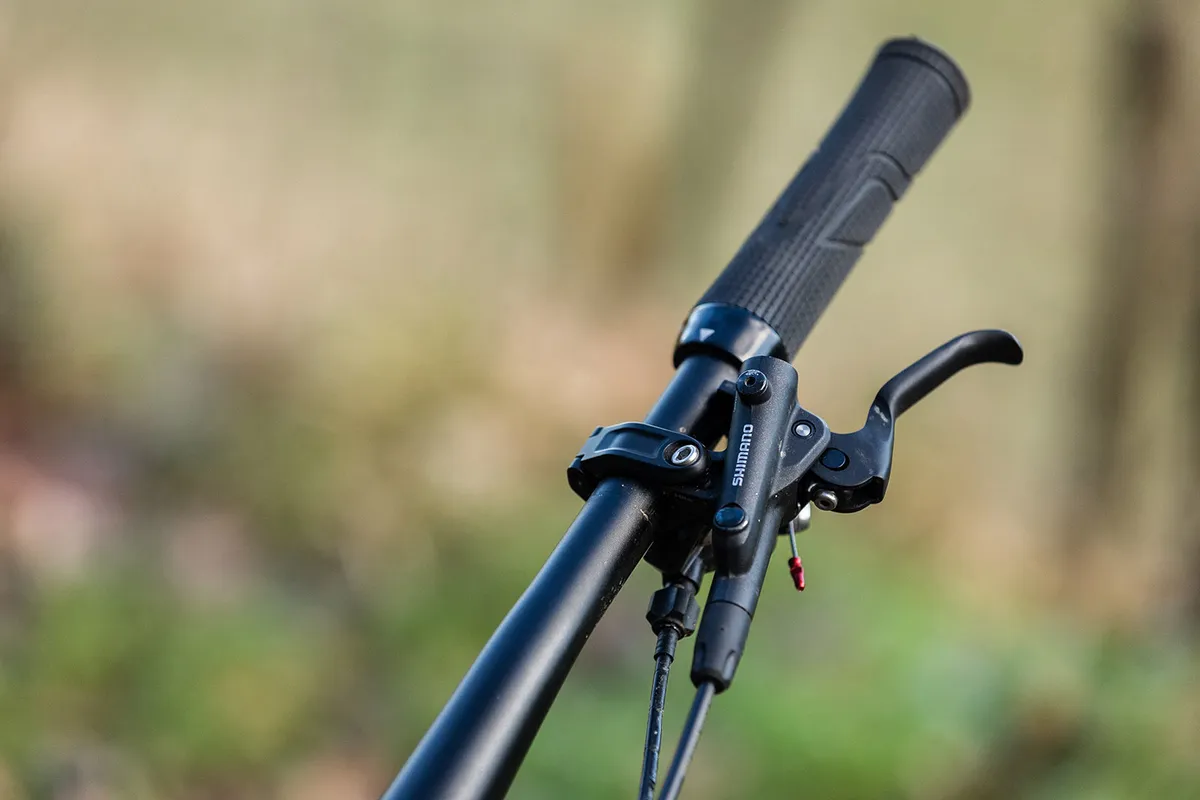
Although it’s a good, solid performer, the Marzocchi Bomber Z2 fork isn’t as well damped as RockShox’s Lyrik Base, adding to hand fatigue on long, rough descents.
Despite its lengthy reach and slack head angle, the One-Forty feels responsive and nimble on the trail. This is mainly thanks to Merida’s FAST suspension design.
There’s bucket-loads of support from the rear suspension, which enables you to easily pop over obstacles or pump the trail for quick direction changes.
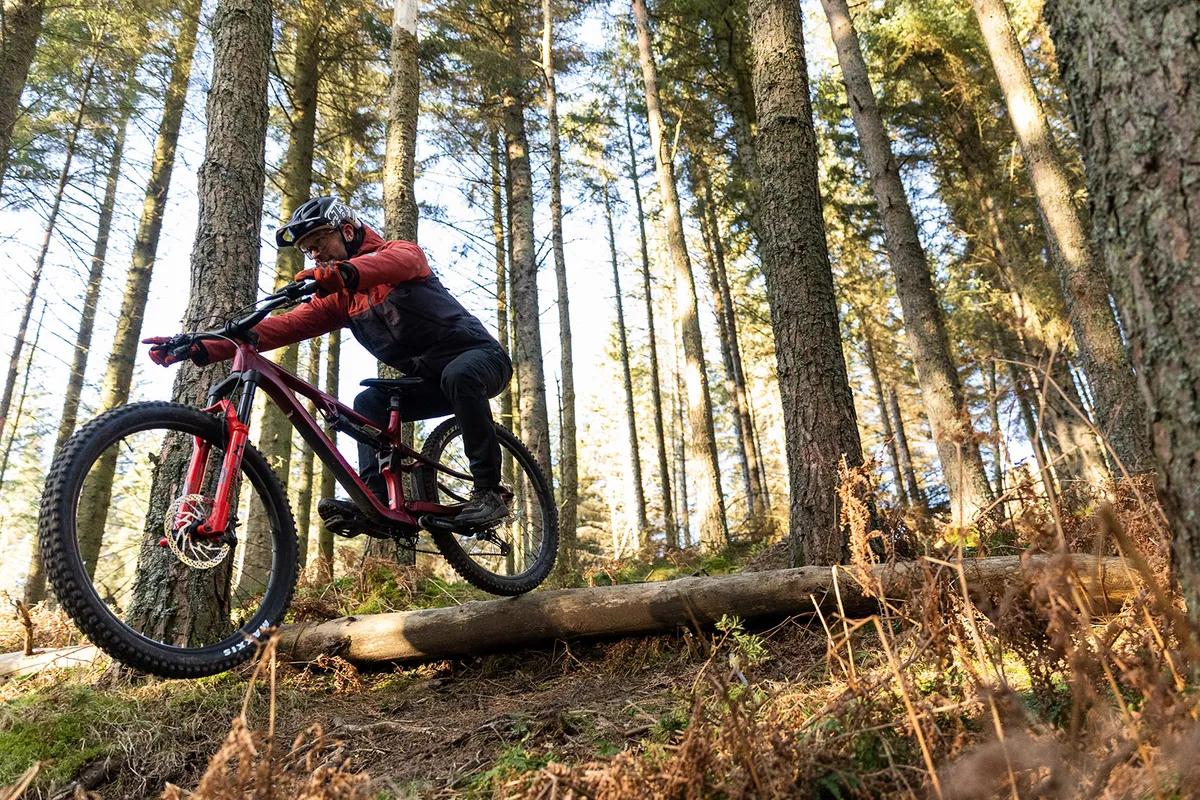
Riding flowing trails is an absolute blast and every last bit of free speed can be drawn from the trail.
All that support comes at the cost of some suppleness though, which means feedback on chattery sections is quite noticeable.
While this wasn’t a huge issue, it meant some composure was lost when it was particularly rough.
Shimano’s Deore four-piston stoppers worked well 99 per cent of the time. Paired with large 203mm rotors front and rear (a welcome sight), they provided plenty of stopping power.
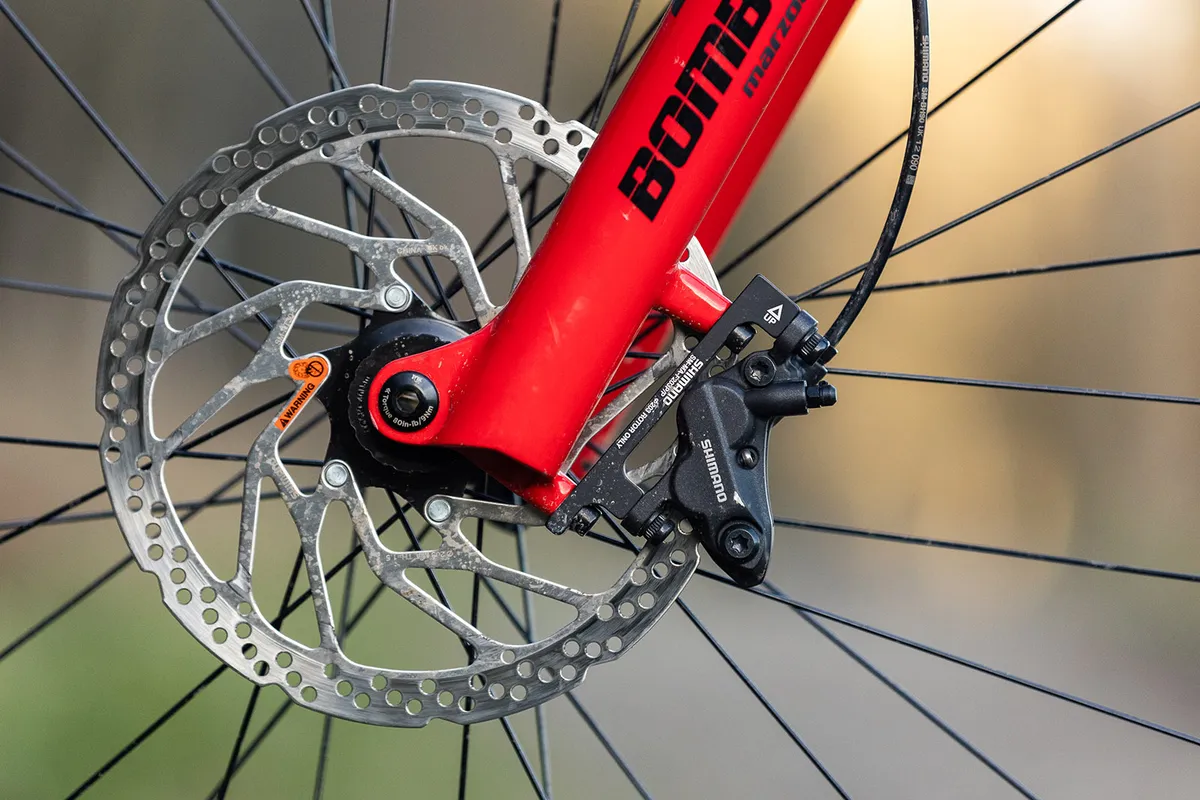
However, on occasion, the bite point of the brakes would wander, making for unpredictable stopping.
The only other gripe I had was about the rear tyre.
The Maxxis Dissector, which contributes to the Merida’s uphill prowess and rolling speed, starts to meet its limits on softer, natural trail surfaces.
This is especially prominent in the wet and, combined with the bike’s supportive-rather-than-plush suspension, meant I sometimes struggled to find sufficient braking traction on steep, loose trails.
A more aggressive rear tyre would certainly help here, at the cost of some rolling speed, but it's an upgrade I would recommend for riders wanting to take the One-Forty off-piste.
Despite these little niggles, the spec of the One-Forty 500 performed admirably, and the bike itself was free from any distracting rattles.
How does the Merida One-Forty 500 compare to the YT Jeffsy Core 1?
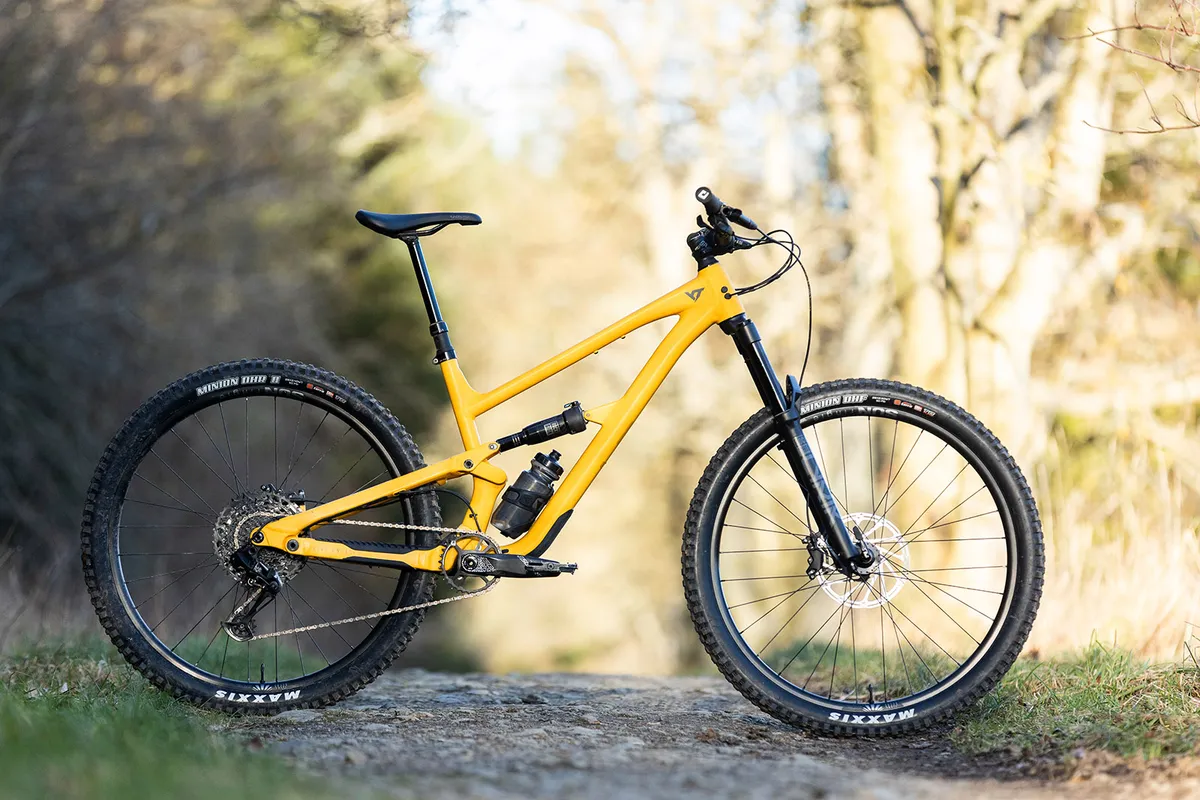
The Merida One-Forty and the YT Jeffsy are both aggressive 29er trail bikes with very similar intentions.
The Jeffsy Core 1 model costs £2,499, and has 145mm of rear travel and a 150mm fork.
Both bikes share similar geometry, with 65-degree head angles. The Merida’s reach is noticeably longer than the Jeffsy’s (which measures 475mm in size large), and its stack is 20mm lower.
On the climbs, the Jeffsy shares a similar, upright pedalling position and an efficient suspension platform. However, the One-Forty has a little bit more support when pedalling out of the saddle, and the lower-profile Maxxis Dissector rear tyre rolls faster than the burlier Minion DHR II on the YT.
The Merida can’t quite match the YT’s smooth and composed suspension on fast and rough descents. However, on mellower gradients and flow trails, the One-Forty’s supportive suspension platform nudges it slightly ahead when it comes to agility and responsiveness.
Merida One-Forty 500 bottom line

It’s safe to say the Merida One-Forty 500 lives up to its award-winning pedigree. With its sensible spec and modern, capable geometry, Merida has crafted a grin-inducing trail bike that excels both up and downhill.
While the suspension isn’t the plushest I’ve tested, its supportive and progressive feel creates a great platform for pumping through trails and playing with the terrain.
I would recommend the One-Forty to trail riders looking for a sensibly priced bike that encourages them to spin quickly to the top of the trails and eke every last bit of speed out of flowing descents.
How we tested | £2,500 trail bikes
I tested the Merida One-Forty 500 on a variety of terrain in the Tweed Valley – from the flowing red and black-graded trails at Glentress to the natural enduro trails of Innerleithen and the Golfie.
Conditions were mixed, from wet and muddy to frosty and dusty, a true representation of Scottish winter riding.
The Marin Rift Zone 29 2 was tested as part of a £2,500 trail bike group test.
Also on test
Product
| Brand | merida |
| Price | 3160.00 EUR,2600.00 GBP |
| Weight | 15.8500, KILOGRAM (Long) - without pedals |
Features
| Fork | Marzocchi Bomber Z2, 150mm (5.9in) travel |
| br_stem | Merida Expert eTRII, 50mm |
| br_chain | KMC-X11 |
| br_frame | Aluminium, 143mm (5.6in) travel |
| Tyres | Maxxis Minion DHF 3C Maxx Terra EXO TR 29x2.5in f, Maxxis Dissector EXO+ TR 29x2.4in r |
| br_brakes | Shimano Deore M6120, 203/203mm rotors |
| br_cranks | Race Face Ride, 32t |
| br_saddle | Merida Comp SL |
| br_wheels | Merida Comp TR |
| br_headset | Merida 8158 |
| br_shifter | Shimano Deore M5100 |
| br_cassette | Shimano Deore M5100, 11-51t |
| br_seatpost | Merida Expert TRII |
| br_gripsTape | Merida Expert EC |
| br_handlebar | Merida Team TR 780mm |
| br_rearShock | RockShox Deluxe Select+ |
| br_bottomBracket | Race Face |
| br_availableSizes | XShort, Short, Mid, Long, XLong |
| br_rearDerailleur | Shimano Deore M5100 (1x11) |
